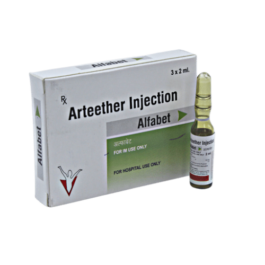QUIVIX-HQ-200 Tablets
COMPOSITION: Hydroxychloroquine 200mg
Description
Hydroxychloroquine
Drug Class: Antimalarials
Chloroquine/hydroxychloroquie can impair the replication of several viruses by interacting with the endosome-mediated viral entry or the late stages of replication of enveloped viruses.
hydroxychloroquine allows lower doses of antiretrovirals, lessening cost and possibly toxicity.
hydroxychloroquine has in-vitro antiviral effects and anti-inflammatory properties that may be of interest in those viral infections associated with inflammation and/or immune activation.
the concomitant administration of chloroquine/hydroxychloroquine to a highly active antiretroviral therapy regimen may result (at least where P falciparum is still susceptible to chloroquine) in a decreased incidence of malaria episodes that have adverse effects in HIV-infected people
due to its antiviral and anti-inflammatory properties, may have some effect on SARS.
Hydroxychloroquine sulfate, is an analog of chloroquine,
used for the treatment and prophylaxis of malaria as well as in the treatment of autoimmune diseases, such as rheumatoid arthritis and systemic lupus erythematosus
can inhibit viral replication, decrease viral binding to target cells through impairing glycosylation of the ACE2 receptors and spike protein as well as inhibit virus assembly and release. On the other hand, with a lower concentration of HCQ, it has the affinity to inhibit nucleic acid sensors, including cyclic GMP-AMP synthesis. This potential benefit of HCQ may cover its action as antiviral therapy.
HCQ was demonstrated to be more potent and safer than chloroquine in inhibiting SARS-CoV-2 infected patients
Asymptomatic COVID-19 with fever.
It is a relatively safe derivative of chloroquine is effectively used for the treatment of systemic lupus erythematosus and other inflammatory rheumatic diseases.
Treatment with antimalarial malarial in rheumatology should be carried out with hydroxychloroquine (HCQ).
It acts by accumulating in lysosomes, where its basic pH modifies the normally acidic milieu.





